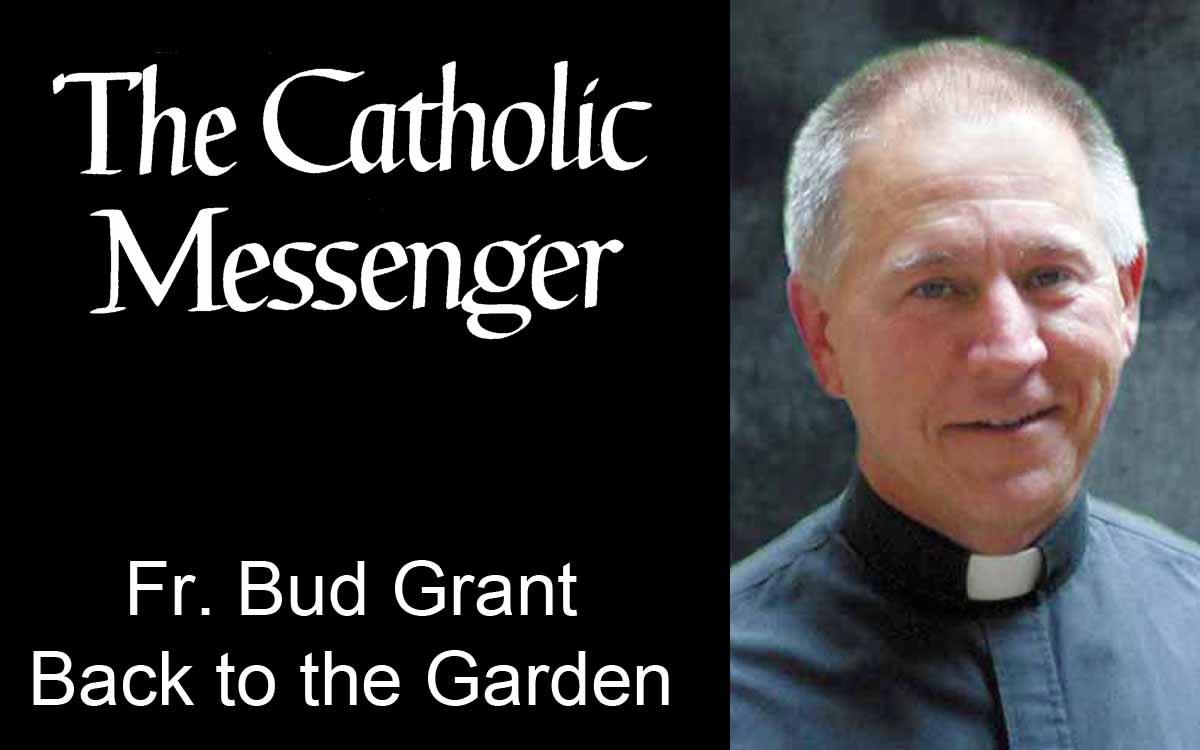By Fr. Bud Grant
This Advent season has me thinking about walls, borders and barriers, mostly because God, by becoming incarnate, and then through his cross, effectively “broke down the dividing wall of enmity through his flesh” so that “he might create in himself one new person, thus establishing peace” (Ephesians 2:14-15).
Appeals to the natural world in order to delve into this mystery saturate our seasonal hymns, our sacred Scriptures and our holy rites. And no wonder, if it is God’s creation.
 It appears, however, that nature is full of barriers that divide one place from another. Mountain ranges and oceans are among them, but also more subtle obstacles. Micro-climates, with differentials in relative rainfall and temperature, depending on elevations or depths, establish sometimes quite tiny ecosystems within which only some species flourish. Aren’t these wall-like?
It appears, however, that nature is full of barriers that divide one place from another. Mountain ranges and oceans are among them, but also more subtle obstacles. Micro-climates, with differentials in relative rainfall and temperature, depending on elevations or depths, establish sometimes quite tiny ecosystems within which only some species flourish. Aren’t these wall-like?
Yet, one can’t help but be mystified by the failure of ecologists to tidily explain exactly what comprises an ecosystem. Defined as a cohesive unit of function and structure (what it does and what it is), an ecosystem is made up of living organisms interacting with one another and with their physical environment (both things and conditions). The more diverse and complex the ecosystem is, the healthier the system.
But honestly, that definition ultimately applies only to the planet: in all other smaller systems, the borders, if they can be called that, are porous … with migrations constantly ebbing and flowing across one system to another. Sure, there are places that are toxic to some and vital to others, but it is stunning to consider how many species move between and among quite diverse systems — like the humming bird, say, which winters in the Yucatan but summers in Newfoundland, or the Pantala flavescens (called the “globe wanderer”) which is found from the Himalayas to Bikini Atoll — and it is a dragonfly. So much for walls.
So, there is really only one ecosystem, which goes by the name “earth.” As far as we know, it is the only ecosystem in the universe. We could be wrong on that, of course, but it is worth pondering, isn’t it? Borders, barriers or “dividing walls of enmity” are purely human constructs, meant to distinguish one micro-system from another but really serving more as demarcations of diversity than divisive barriers, perforated with portals.
Walls can be good: my fish wouldn’t do very well outside their tank. Neither would I fare well “in this bleak midwinter” were it not for the walls of my home. Yet, neither would I thrive without sun through windows or friends through doors: the best walls have wide portals, through which comes the “Lord of David’s Key: The royal door flung wide and free.”
In the Gospel for Christmas morning Mass, we proclaim that “from the beginning” Christ was “with God … was God … He was in the world and the world came to be through him” (Jn. 1:1-10). The Creator becomes creation, establishing himself as the “gate” (Jn. 10:7) so that “Heaven and Earth are full of Your glory.”
In the Loreto Litanies, Mary is the “Gate of Heaven” since, through her acquiescent “fiat” (that is: “may it be done”), she chose to cooperate with the Divine Will to once and for all destroy the barrier between creation and the Creator. This is no mere metaphor, but a breathtaking theological assertion, as in Paul’s intriguing, if also enigmatic, claim that “creation itself would be set free from slavery to corruption and share in the glorious freedom…” (Romans 8:21) or Revelation’s envisioning a “new heaven and a new earth…” within which stands the New Jerusalem “whose gates will never be shut” (Rev. 21: 1, 25). The Feast of the Incarnation is a festival of opening, flowing movement, a holy exchange between the Divine Eternal and the Sacred Creation … an embrace, a kiss. “The Heavens are telling the glory of God; the wonder of his work displays the firmament.”
(Father Bud Grant is a professor of theology at St. Ambrose University in Davenport.)











